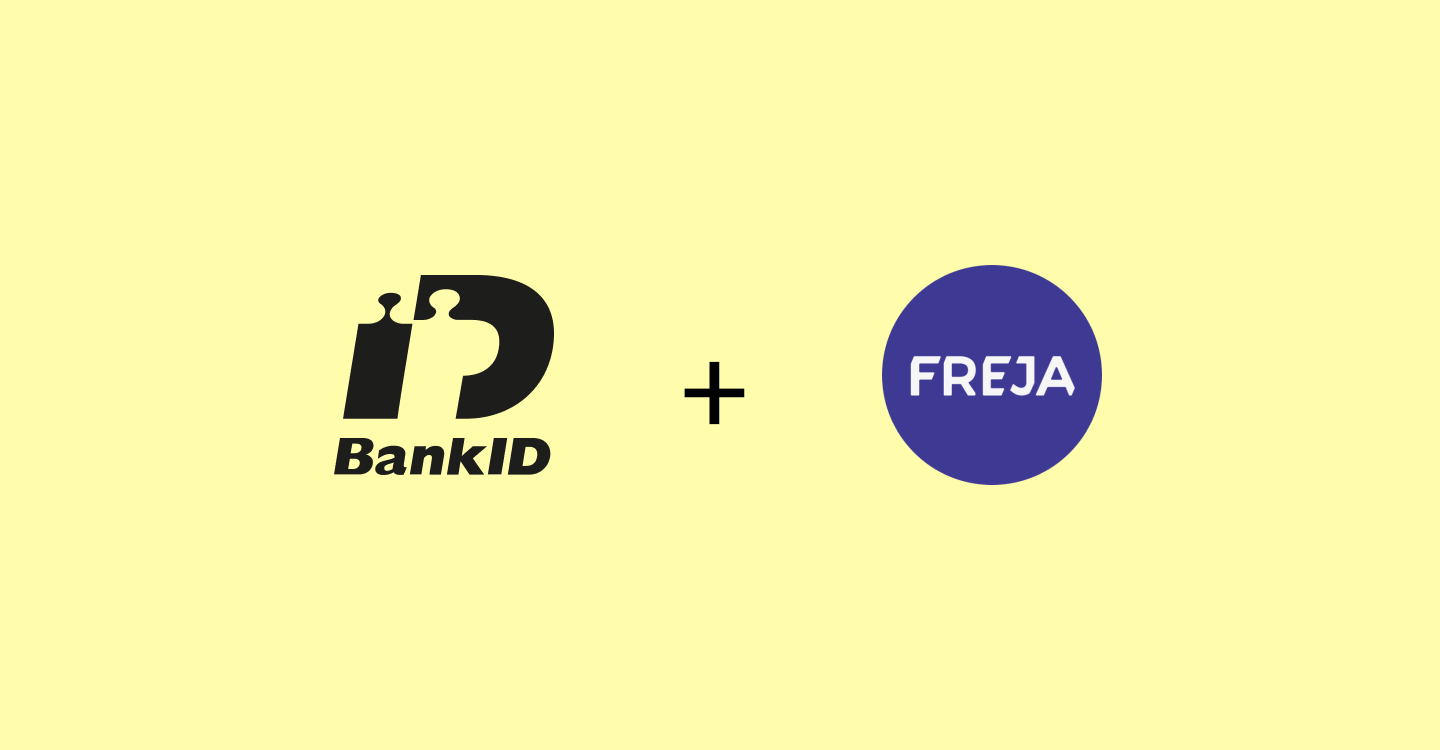Why Offering Both BankID and Freja eID Makes Sense

Electronic identification (eID) is the standard method for accessing digital services in Sweden. Government agencies, banks, healthcare providers, and private businesses rely on eID logins for identity verification. Similarly, end users are familiar with eID login processes and trust their security.
The two leading eID providers in Sweden are BankID and Freja eID.
BankID, launched in 2003 by a consortium of banks, is by far the most widely used. With more than 8.6 million active users in 2024, it’s deeply integrated into daily life. Nearly all adult Swedes have a BankID (99.9% of citizens aged 18–67), and it’s accepted across 7,500 digital services. According to a recent survey, 87% of the population considers BankID the most important app.
Freja eID is a newer government-recognized eID with over a million active users. Freja is the only eID in Sweden that’s officially approved for both Swedish and foreign citizens for authentication and digital signing. Unlike BankID, which requires a Swedish personal identity number (personnummer) and a bank account, Freja can also be used by individuals without a personnummer. Identity verification is based on biometric passports and is available for citizens of 167 countries. Freja supports biometric authentication (fingerprint or face) and can be used both online and offline as a digital ID card. While not as widely accepted as BankID, Freja can be used in thousands of retail locations and private and public e-services, including government agencies like the Tax Agency, the Pensions Agency, and the Employment Agency. Freja is also EU-approved for foreign e-services within the EU/EEA.
Both BankID and Freja eID have their advantages. BankID provides unparalleled reach within the Swedish population, while Freja works for people that BankID can’t serve, such as recent immigrants or foreign residents. Rather than viewing them as alternatives, businesses can combine BankID and Freja to build a more reliable and inclusive access management system.
Let’s explore the three main business advantages of offering both eIDs together.
1. Improved reliability through fallback authentication
Relying on one eID to manage access creates a single point of failure. If that system experiences an outage or a cyberattack, users may be completely locked out of your service. As the major BankID outage of April 2025 shows, even highly reliable systems can experience downtime.
Integrating both BankID and Freja creates a fallback authentication option. This prevents users from being stranded if one provider is temporarily unavailable, making your authentication system more robust.
2. Including underserved populations
Perhaps the most compelling reason to combine BankID and Freja is to ensure no user is excluded. While BankID has near-universal adoption among Swedish residents, it’s unavailable to those without a Swedish personal identity number and bank account. For instance, recent immigrants may face delays when accessing digital services, as it takes time to obtain a personnummer and a bank account.
Freja addresses this, since it’s the only high-assurance Swedish eID that can be issued without a personal number. Foreigners and newcomers can use their biometric passports to enroll in Freja and obtain government-approved e-identification, gaining immediate access to digital services. By offering Freja alongside BankID, you ensure everyone can access your services from day one.
3. Reaching broader audiences
Beyond inclusivity, providing both eIDs naturally expands your user base. While BankID covers most long-term Swedish residents, not everyone in your potential audience may have it. By supporting Freja, you tap into users who don’t qualify for BankID or may have chosen Freja for its features. Offering both eIDs can also improve user experience, as individuals may find one app more intuitive than the other.
Convenient for users, smart for businesses
Combining Swedish BankID and Freja eID creates a balanced, future-proof identity strategy for your business. The two eID systems complement each other: One offers scale, the other offers inclusivity, and both offer top-tier security.
By integrating both solutions, you create a smooth user experience (customers can choose their preferred ID method), expand your customer base (no more losing users without a specific eID), and strengthen operational resilience (technical issues with one eID provider won’t disrupt your authentication workflows).
Ready to get started?
You can integrate Swedish BankID, Freja eID, and other Nordic and European eIDs through Criipto.
Talk to an expert or create a free developer account to start accepting eID logins in your website or application.



